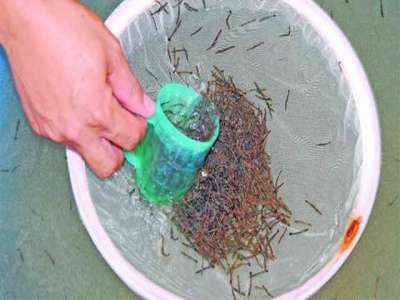Vietnams remarkable step in broodstock production

Institutes, universities, centers, companies and corporations related to aquaculture are taking part in broodstock production and achieving remarkable steps.
Achieve self-sufficiency
Vietnam did experience a crisis of broodstock, with the vast majority of them imported from other countries. “Millions of Vietnamese farmers and I had to wait for broodstocks imported from foreign countries once, all of the aquaculture industry depended on imported broodstocks. In a very hard time, we went abroad to buy broodstocks but sellers told us they had sold out, but we then figured that they had already exported to other countries with higher offer prices”, said Lương Thanh Văn, General Director of Viet Uc Seafood Corporation.
Some corporations mounted their effort at broodstock development and suffered from failure due to lack of experience and difficulties in production technologies while just a few countries achieved success at that time. They chose a simple way of importing broodstocks. However, the situation has been changed over the last few years.
According to statistics by the Research Institution of Aquaculture no.1, science and technology have helped diversify farm-raised species, improve broodstock quality, especially major species such as black tiger shrimp, white leg shrimp; produce SPF broodstocks and select fast growing black tiger shrimps. Demand in broodstock of pangasius, claim and traditional freshwater fishes has been satisfied. Some marine species and seafood have been produced successfully and partly meet farmers’ demand. As for genetic selection, successful quality enhancement has involved cold and salinity resistance (tilapia) and genetic diversification (white leg shrimp).
Leading businesses in the fisheries industry, such as C.P, Thăng Long, UniPresident Vietnam, and Viet-Uc Seafood Corporation have taken initiative in producing broodstocks. The great success achieved by Viet-Uc Seafood Corporation has given Vietnam the rank of the fourth biggest producer of commercial post larvae, trailing the US, Singapore and Thailand.
Take initiative in production
There are around 2,500 facilities of producing and trading post larvae nationwide, with the annual output of more than 130 billion pcs. The short supply in post larvae has resulted in difficulties faced by shrimp farmers. Actually, poor quality post larvae without clear origin are being sold rampantly while regulated production of post larvae is carried out in just a few big companies. Among more than 130 billion of domestic post larvae each year, less than 50% of them meet high quality standards, according to businesses. Ninh Thuận, which is regarded as the country’s shrimp capital with leading producers of post larvae, has to import a large amount of post larvae from the US and Thailand.
Quảng Ninh, with a total of aquaculture are of nearly 20,000 ha, are in need of around 2 billion post larvae each year but local production only covers 20%. As for mollusks, the province needs around 70 million of broodstocks while local facilities only produce 10-12%, resulting in a large amount of broodstock being imported from other provinces and China. Those broodstocks sometimes are not tightly controlled.
In Ho Chi Minh city, a project of hi-tech broodstock production has been developed by the city authority in association with aquaculture research institutes but the result was not as expected. Representatives of some companies related to broodstock production said that they desired to invest into broodstock production, but ironically, it cost much more than importing broodstocks from other countries. “Our broodstocks are qualified and cost much money but their prices are not higher than what are sold rampantly, untraced in the market”.
Có thể bạn quan tâm
 New crop of shrimp in Mekong Delta faces challenges, farmers are concerned
New crop of shrimp in Mekong Delta faces challenges, farmers are concerned The shrimp exports start recovering after the social distancing due to the covid-19. Nevertheless, farmers are facing challenges from selecting post larvae
 Quảng Ngãi - Aquaculture models adapt the climate change
Quảng Ngãi - Aquaculture models adapt the climate change Not only is the farming model of shrimp, crab and mullet suitable to earthen ponds of the tidal areas when the balance of the ecosystem in water is disrupted
 Super-intensive shrimp farming with three phases applied with high technology
Super-intensive shrimp farming with three phases applied with high technology Three – phase super-intensive shrimp farming practice involves one phase of nursery within 20 days and two phases of commercial farming, 50 days each.